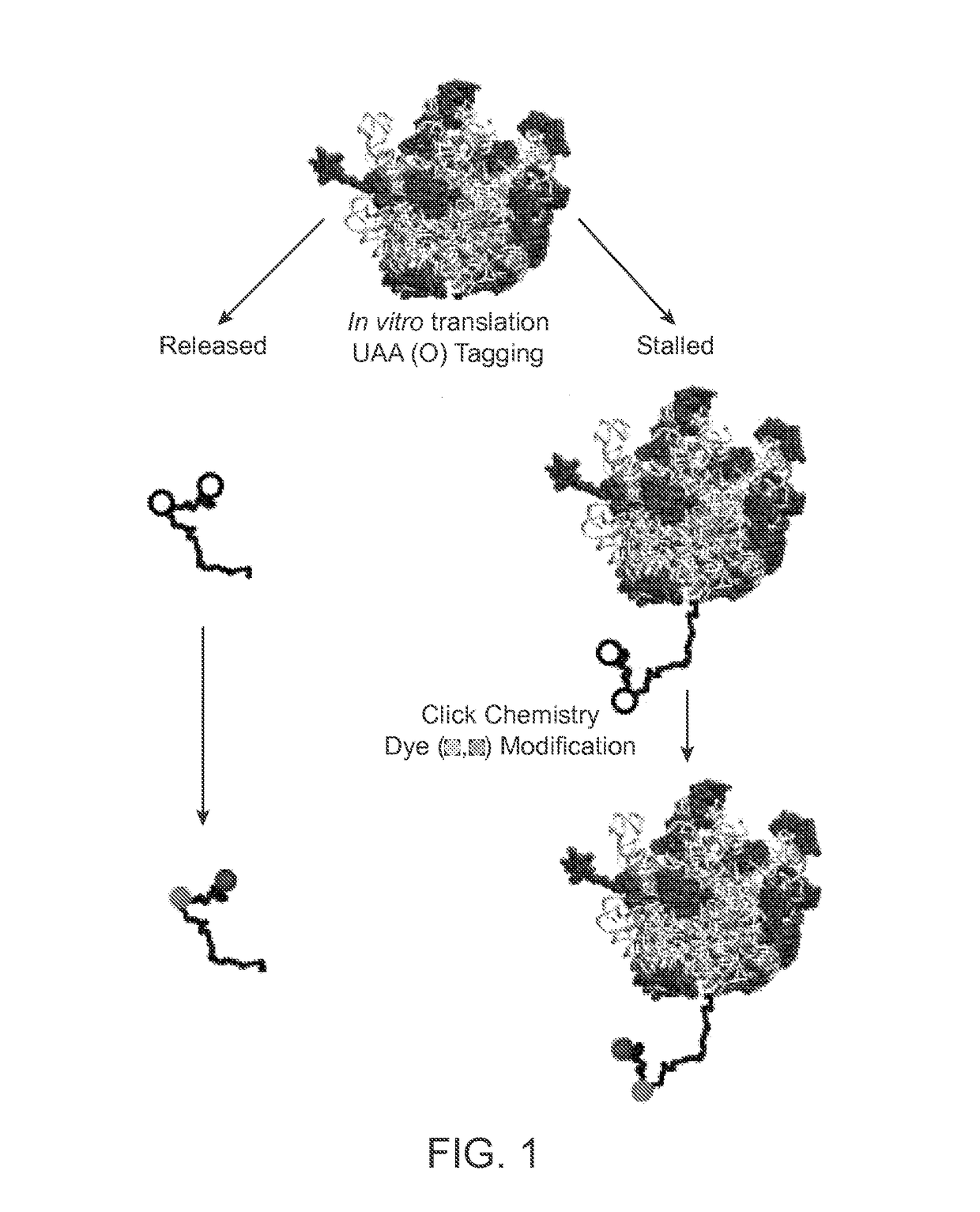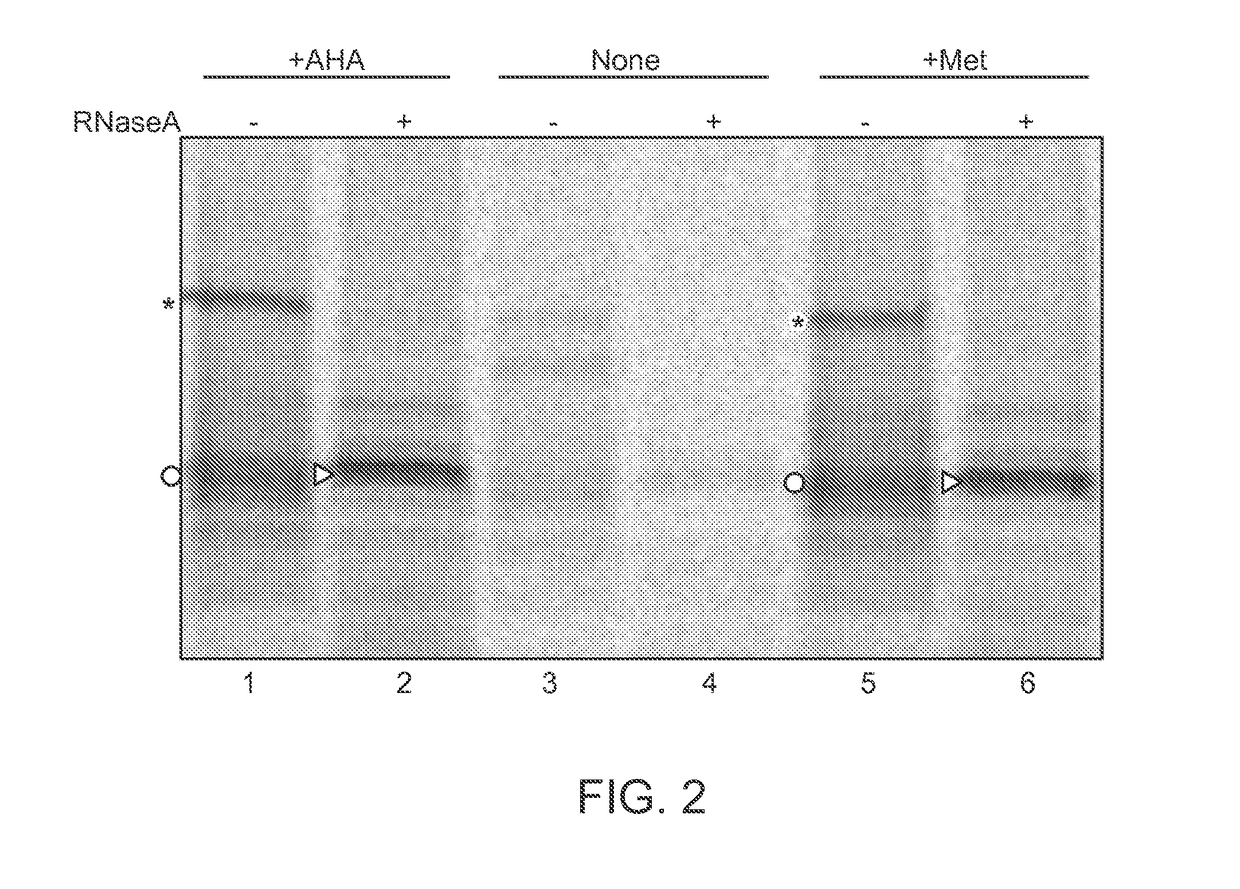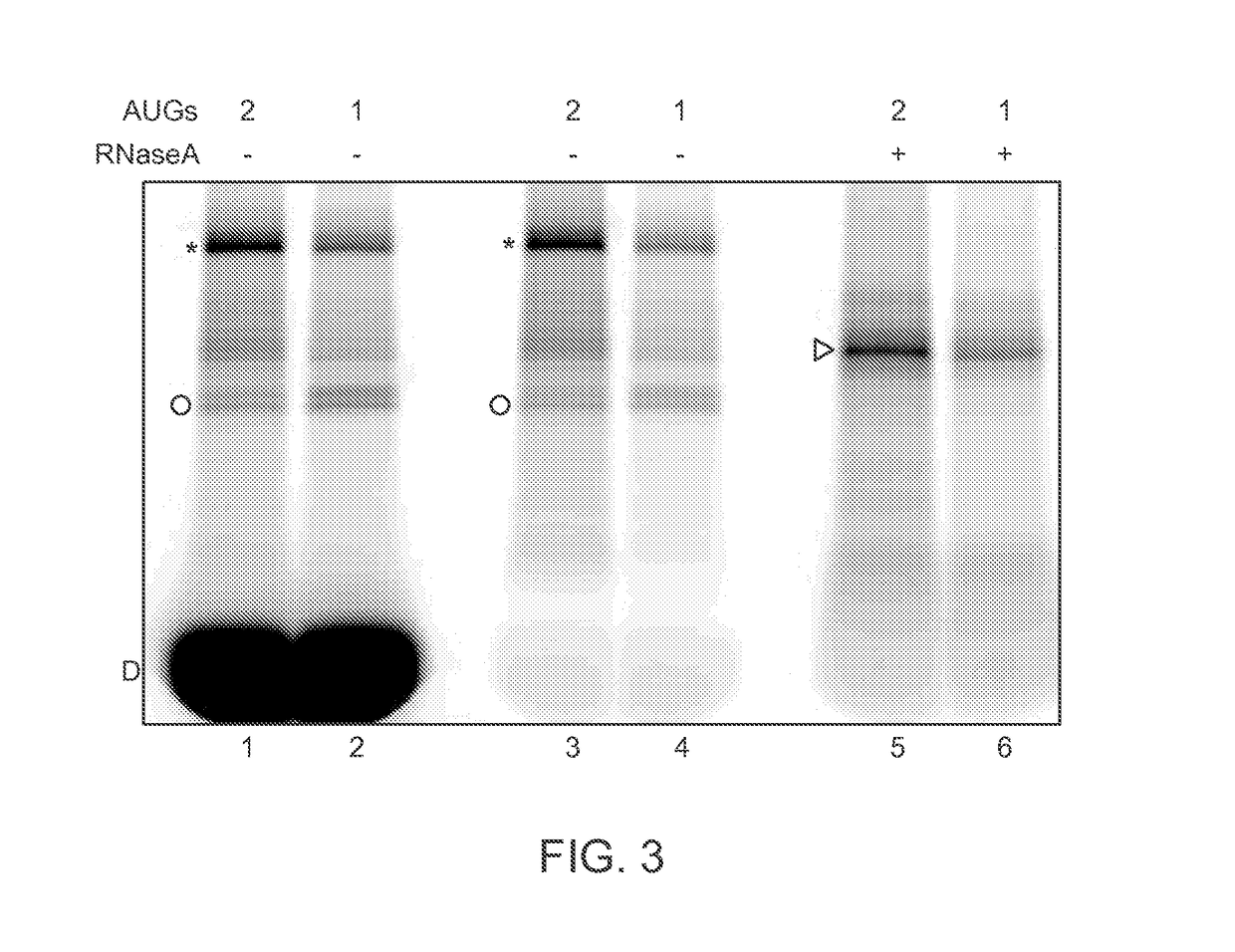Single-Molecule Phenotype Analysis
a single-molecule, phenotype technology, applied in the field of single-molecule phenotype analysis, can solve the problems of low throughput, inefficient process, and difficult rate-limiting barrier to progress in preparation of protein samples for single-molecule biophysics applications, and achieve the effect of improving the efficiency of the process, improving the phenotype, and improving the phenotyp
- Summary
- Abstract
- Description
- Claims
- Application Information
AI Technical Summary
Benefits of technology
Problems solved by technology
Method used
Image
Examples
example 1
Purified and Reconstituted In-vitro Translation System Components
[0159]Cloning: E. coli translation factors, aminoacyl-tRNA synthetases (aaRSs), adenylate kinase (AK), nucleotide diphosphate kinase (NDK), and methionine transformylase (MTF) were each PCR amplified from E. coli MG1655 genomic DNA (A.T.C.C.) and LIC-cloned into the ampicillin-resistant plasmids pET-His6-TEV-LIC-(2B-T) (www(dot)addgene(dot)org) and pJL-H6 yielding, respectively, N-terminal 6xHis-TEV-tagged and C-terminal 6xHis-tagged expression constructs. In the case of the multi-subunit synthetases, PheRS and GlyRS, the alpha and beta subunits were tagged respectively. Untagged EF-Ts was also cloned into a kanamycin-resistant variant of pJL-H6 for co-expression with tagged EF-Tu.
[0160]Protein Expression: Transformed BL21-Star(DE3) cells were grown to an OD of 0.5-0.9 in 1 L Luria-Bertani (LB) broth. Isopropyl-β-D-thiogalactoside (IPTG) was added to a final concentration of 0.1 mM, and cells were grown for an addition...
PUM
| Property | Measurement | Unit |
|---|---|---|
| pH | aaaaa | aaaaa |
| dissociation constant | aaaaa | aaaaa |
| dissociation constant | aaaaa | aaaaa |
Abstract
Description
Claims
Application Information
 Login to View More
Login to View More - R&D
- Intellectual Property
- Life Sciences
- Materials
- Tech Scout
- Unparalleled Data Quality
- Higher Quality Content
- 60% Fewer Hallucinations
Browse by: Latest US Patents, China's latest patents, Technical Efficacy Thesaurus, Application Domain, Technology Topic, Popular Technical Reports.
© 2025 PatSnap. All rights reserved.Legal|Privacy policy|Modern Slavery Act Transparency Statement|Sitemap|About US| Contact US: help@patsnap.com



